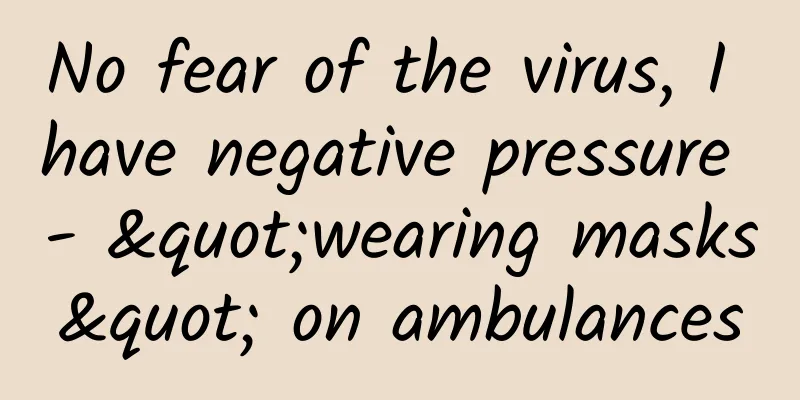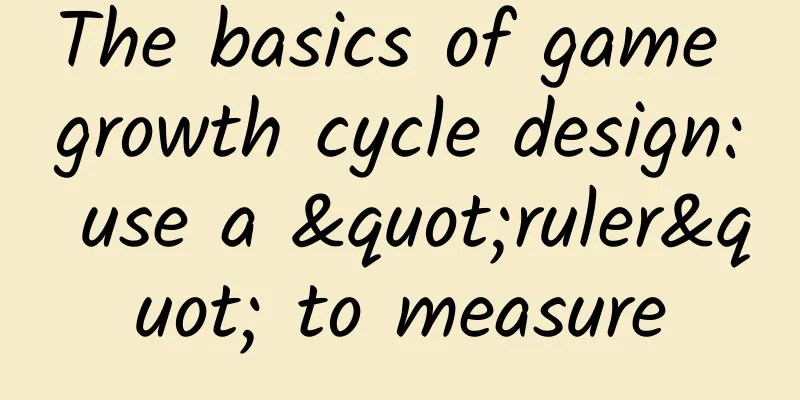Become a powerful and outstanding full-stack designer!

|
When people talk about full-stack designers, it seems like a flashy concept has been born. At first glance, this high-sounding concept seems to mean one thing: an all-round designer. In the past, we advocated "professional things should be done by professionals", and in team relationships, the responsibility of designers is to design seriously, and programmers write code steadily, each doing their own job, cooperating but trying not to interfere with each other. However, with the change of product design ideas and the evolution of team collaboration, the scope of responsibilities of each role in the team began to change. There are many reasons for this change. This seemingly "scam" concept, if you really look into it, really has its reasons. What is a full stack designer? Compared to the concept of Full Stack Designer, the concept of Full Stack Developer came out earlier. The concept of Full Stack is not equivalent to omnipotence. Strictly speaking, it refers to a person who has mastered multiple skills and can use multiple skills to independently complete design works or product development. This means that a true Full Stack Engineer can use multiple skills to handle a basic interface (note that it is basic), back-end functions and programs, and databases, while a Full Stack Designer can relatively independently handle the basic concept of a project, realize wireframes, design visual drafts, make prototypes, write front-end code, and handle animations (JS/jQuery, etc.), and independently complete design and design-related parts. Judging from the current situation, the emergence of full-stack designers is not accidental. With the explosion of mobile terminals and the advent of the entrepreneurial wave, there are more and more small development teams. A large number of small teams really cannot arrange enough people for every small link, which also makes many members of the team master skills beyond the scope of their profession. Back-end who can cut pictures, operations who can draw prototypes, front-end girls who can reinstall the system, editors who can go to the back-end to write database code, such team members are not uncommon. If you look carefully, you can see such team members in many teams. However, the connotation of a full-stack designer does not require the designer to know everything, but requires the designer's skill tree to be based on the project, process and business. Taking web design as an example, a sufficiently good full-stack designer can strongly assist the product manager in completing the early conception of the entire project (brainstorming, moodboard, basic planning), prototype design (wireframe, visual draft, low-fidelity prototype, high-fidelity prototype), user research (user experience, etc.), testing, front-end development (HTML, CSS, JS, etc.), and handover with programmers (understanding interfaces, deep development needs, what kind of front-end code will better match the back-end and program, etc.). Advantages of a full-stack designer Full-stack designers undoubtedly have obvious advantages. First of all, in most cases, the boss will always pay higher wages to designers who control the process and are familiar with multiple skills. For the team, it seems more cost-effective to hire a full-stack designer who is versatile. A designer who is familiar with product development and design processes understands the limitations of product design and clearly controls the expectations of product design. If there are no natural defects in character, he will be very handy in team collaboration.
This is the main advantage of full-stack designers: global thinking. Being familiar with the process can make team collaboration more convenient, and understanding the details of development, marketing, and user experience will make cooperation more seamless, reducing rework and various emergencies in the later stage. Modern APP development and Web development face a lot of technologies and tools. A designer who understands Node.js knows how to write code classes to match the corresponding database when doing front-end development. There is no doubt that the components involved in modern product design are quite complex. Compared with senior experts, a designer who is familiar with various technologies can make the situation easier to control. There is an important common sense in team management. The bigger the project and the more people there are, the higher the communication cost and the lower the efficiency. Different people speak different words. It is not uncommon for the front-end and back-end, designers and programmers to quarrel. The existence of full-stack design will reduce the communication barriers as much as possible. The potential problems in the process and the conflicts between development and design, the full-stack designer can quickly locate the crux of the communication barriers. Knowing the product, the front-end, the design and the back-end, the communication results are obviously different from before. Full-stack designers are usually talented people with strong learning abilities. In many cases, some difficult problems or some positions that are not cost-effective to hire someone alone can be solved or replaced by full-stack designers. For startups, although the salary of such designers will be higher, the overall cost will be reduced. The cross-border skill combination of a full-stack designer is not as simple as 1+1=2. Many skills and knowledge can bring about qualitative changes in design and collaboration after being applied to other areas. Will the interface designed by a designer who is proficient in general use and research be more user-friendly? This is obvious. Hidden Problems of Full-Stack Designers There are two sides to every problem. A wide range of knowledge and a comprehensive skill set can also become obstacles to the growth of a full-stack designer.
In the past, the professionals and senior experts we are familiar with took the vertical development route, deeply cultivated a certain professional field, followed the development trends and technical details of a specific field, and made the sharpest knife to solve the most cutting-edge problems in this field. The full-stack designers we are talking about at this moment are horizontally developed. Expanding their knowledge and spanning multiple fields makes it difficult for them to specialize in all fields. Technology is developing so fast, and there are too many things to learn. If there is no in-depth consideration and careful thinking, it is easy to fall into a vicious cycle of biting off more than you can chew. Therefore, to become a full-stack designer, you should choose some important fields, keep up with technological developments, and understand new models and new tools. For employers, this can sometimes be a pitfall. A full-stack designer who is proficient in design and familiar with HTML/CSS may not be familiar with JS. In this case, this full-stack designer cannot replace the functions of three people by himself, which is worth noting. At the same time, as an enterprise, we should also correctly understand the value of full-stack designers. If you hire a full-stack designer just for the sake of "cheapness", you will find that this designer seems to know everything and nothing, then you really haven't found the "correct use" of full-stack designers. Yes, he really can't answer some basic questions in one go, but he understands what's going on and knows which mistakes to avoid. The human brain is not a computer. A full-stack designer cannot remember the answers to all technical problems, nor can he handle all things, but he usually knows the key to the problem, where to learn, where to get answers, and where to solve the problem. Full stack designers are important In fact, this issue has been discussed in depth in the above article. Full-stack designers can analyze and customize their own "skill tree" according to their own situation, understand the product architecture, design and development process, and be versatile. They can make use of user experience, design patterns, technology and tools to better complete product development, systematically design each link of the project, and make the product move towards a better and more excellent way. A full-stack designer is a designer who focuses on the whole, which is different from a traditional designer who only works on details. When your team has a full-stack designer, you will find that design and development are more unified, the process is smoother, and the product quality is improved. For the team, the growth potential of full-stack designers is worth looking forward to. If you are a freelance designer, becoming a full-stack designer can help you complete your projects better, right? Conclusion To become a full-stack designer, you undoubtedly need to study in depth. If you have a clear idea of your own development direction and are willing to become more knowledgeable and outstanding through learning, then you might as well take a good look at the following books. Maybe your future lies there! |
<<: Become a better programmer: How to read source code
>>: What programmers must know about the evolution of the front-end
Recommend
Most people don’t know how unhealthy puffed foods are
Puffed food is a new type of food developed in th...
50th Anniversary: Nissan and Italdesign Create the Ultimate GT-R50
To celebrate the 50th anniversary of the GT-R fam...
Breaking into hotels, strolling on the streets, crossing the Yangtze River...the wild boar City Walk finally got into big trouble!
In recent days, the news of "wild boars ente...
Others with 0 followers can easily get 100,000 likes on Douyin. What is Douyin’s recommendation algorithm?
Tik Tok 's decentralized algorithm gives ever...
Tianshui Mini Program Customization Company, how much does it cost to customize a paper product mini program?
WeChat Mini Program is an application that users ...
Which of the powerful Internet companies in Guangzhou is the best SEO company in Guangzhou?
Currently, Internet marketing has become the main...
Super stable! Chang'e 6 successfully landed on the back of the moon
This is a historic moment in human exploration of...
Baidu bidding promotion plan, a must-read for newbies!
Baidu bidding promotion plan is divided into 2 ty...
iOS 14.8 released, all users are recommended to update
Early this morning, Apple pushed the official ver...
The big-screen phone bet is right! iOS has reversed its global market share
[[125989]] Last year, Apple released two large-sc...
A stunned bird fills a monitoring gap for a species
"The release into the wild lasted 75 days, w...
Information flow advertising optimization driven by data monitoring!
In future advertising , the selection of informat...
3 tips to teach you how to follow the hot spots correctly
There have been many hot events and festivals rec...
Tencent's operational path over the years
I would like to share with you four short stories...









